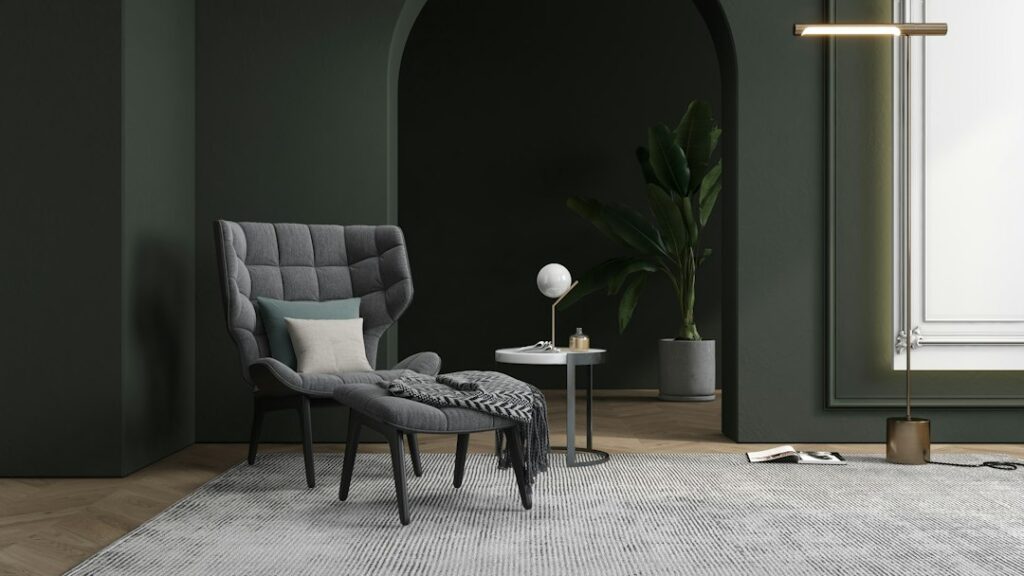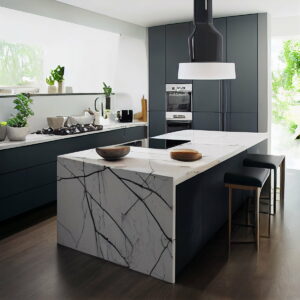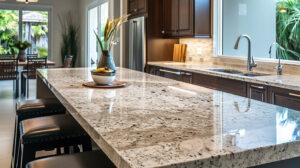Natural stone has long been admired for its beauty and durability, making it a popular choice for interior design. From granite and marble to quartz and limestone, there are a wide variety of stone types to choose from. One of the most exciting aspects of using natural stone in design is the ability to mix and match different types to create a unique and visually appealing space. By understanding the characteristics of different stone types and how they can complement each other, you can create a truly stunning interior.
Key Takeaways
- Mixing and matching stone types can create a unique and visually appealing design.
- Understanding the characteristics of different stone types is important for creating a cohesive color palette.
- Bold patterns and textures can add visual interest to a space when paired with stone.
- Stone can be used as a focal point in a room to create a dramatic effect.
- Balancing stone with other materials is key to achieving a harmonious look in your design.
Understanding the Characteristics of Different Stone Types
Before diving into the world of mixing and matching stone types, it’s important to understand the characteristics of each type. Granite, for example, is known for its durability and resistance to heat and scratches, making it an excellent choice for kitchen countertops. Marble, on the other hand, is more porous and prone to staining, so it may be better suited for bathroom vanities or fireplace surrounds. Quartz is a man-made stone that offers the look of natural stone with added durability and low maintenance. By understanding these differences, you can choose the right stone types for your specific needs.
Creating a Cohesive Color Palette with Stone
When mixing and matching different stone types, it’s important to consider the overall color palette of your space. Choosing stone colors that complement each other can create a cohesive and harmonious look. For example, pairing warm-toned granite countertops with a cool-toned marble backsplash can create a beautiful contrast. Additionally, using accent stones in different colors can add pops of color and interest to your design scheme. Whether you prefer a monochromatic look or want to experiment with contrasting colors, there are endless possibilities when it comes to creating a cohesive color palette with stone.
Pairing Bold Patterns and Textures for Visual Interest
In addition to color, patterns and textures play a crucial role in the design of a space. Mixing and matching different stone patterns and textures can create a dynamic and visually appealing look. For example, pairing a smooth and polished marble floor with a textured slate accent wall can create an interesting contrast. Additionally, using different stone types with bold patterns, such as veining or speckling, can add visual interest to your space. By experimenting with different patterns and textures, you can create a truly unique and visually stunning interior.
Using Stone as a Focal Point in a Room
One of the most effective ways to incorporate stone into your interior design is by using it as a focal point in a room. Whether it’s a statement piece like a fireplace or an accent wall, highlighting the natural beauty of the stone can create a stunning centerpiece. For example, a floor-to-ceiling marble fireplace can become the focal point of a living room, drawing attention to its elegance and beauty. By using stone as a focal point, you can create a visually striking space that is sure to impress.
Incorporating Stone into Existing Design Elements

If you’re not ready to commit to a full stone feature, incorporating stone into existing design elements can be a great way to add a touch of elegance and sophistication to your space. For example, adding granite countertops to your kitchen or bathroom can instantly elevate the look and feel of the room. By choosing stone that complements the existing design elements, you can create a cohesive look that ties everything together. Whether it’s adding stone to your kitchen island or incorporating it into your bathroom vanity, there are endless possibilities for incorporating stone into your existing design.
Embracing the Beauty of Natural Stone Variations
One of the most unique aspects of natural stone is its variations and imperfections. No two pieces of stone are exactly alike, which adds character and interest to any space. Instead of trying to hide these variations, embrace them and use them to your advantage. For example, using a mix of different stone types with varying patterns and colors can create a visually stunning and one-of-a-kind look. By celebrating the natural variations in stone, you can create a space that is truly unique and reflects your personal style.
Balancing Stone with Other Materials for a Harmonious Look
While stone is a beautiful material on its own, pairing it with other materials can create a balanced and harmonious look. For example, combining stone with wood can create a warm and inviting atmosphere, while pairing it with metal can add a touch of modernity and sophistication. By choosing materials that complement each other, you can create a cohesive design scheme that is visually appealing. Whether it’s combining stone countertops with wooden cabinets or using stone tiles with metal accents, the possibilities for mixing materials are endless.
Choosing the Right Stone Types for Your Space
When it comes to choosing the right stone types for your space, there are several factors to consider. First and foremost, consider the durability and maintenance requirements of each type. If you have a high-traffic area or a space that is prone to spills and stains, you may want to choose a more durable and low-maintenance stone like quartz. Additionally, consider the design style of your space. If you’re going for a modern and sleek look, you may want to choose a stone type with clean lines and minimal patterns. Working with a professional can help you navigate these decisions and choose the best stone types for your specific needs.
Maintenance and Care for Your Stone Surfaces
Once you’ve chosen the perfect stone types for your space, it’s important to properly care for and maintain them to ensure they continue to shine for years to come. Different types of stone require different cleaning and maintenance techniques, so it’s important to follow the manufacturer’s recommendations. Generally, it’s best to avoid harsh chemicals and abrasive cleaners, as they can damage the stone. Instead, use a mild soap and warm water to clean your stone surfaces. Additionally, consider sealing your stone to protect it from stains and damage. By properly maintaining and caring for your stone surfaces, you can ensure they remain beautiful and functional for years to come.
In conclusion, mixing and matching different stone types can add a unique and beautiful element to any space. By understanding the characteristics of different stone types, creating a cohesive color palette, and incorporating stone into existing design elements, you can create a harmonious and visually appealing space. Don’t be afraid to embrace the natural variations in stone and pair it with other materials for a balanced look. With proper maintenance and care, your stone surfaces will continue to shine for years to come.
If you’re interested in learning more about the hot trends in granite colors, check out this informative article from Ed Stone Inc. They discuss the latest color options available for granite countertops and how they can add a dynamic touch to your interior. Discover the various shades and patterns that are currently in demand and find inspiration for your next home renovation project. Read more
FAQs
What is mixing and matching in interior design?
Mixing and matching in interior design refers to the practice of combining different materials, textures, and colors to create a dynamic and visually interesting space.
What are stone types commonly used in interior design?
Stone types commonly used in interior design include marble, granite, limestone, travertine, slate, and quartzite.
What are the benefits of mixing and matching stone types in interior design?
Mixing and matching stone types in interior design can add depth, texture, and visual interest to a space. It can also create a unique and personalized look that reflects the homeowner’s style and taste.
How do you mix and match stone types in interior design?
To mix and match stone types in interior design, consider using different types of stone for flooring, countertops, backsplashes, and accent walls. Choose stones that complement each other in terms of color, texture, and pattern.
What are some tips for mixing and matching stone types in interior design?
Some tips for mixing and matching stone types in interior design include choosing stones with similar color tones, using contrasting textures to create visual interest, and incorporating a neutral stone as a base to anchor the design.
What are some examples of mixing and matching stone types in interior design?
Examples of mixing and matching stone types in interior design include using marble and granite together for a kitchen countertop, combining slate and limestone for a bathroom floor, and using a mix of quartzite and travertine for a fireplace surround.





